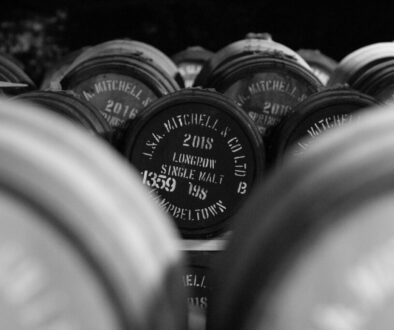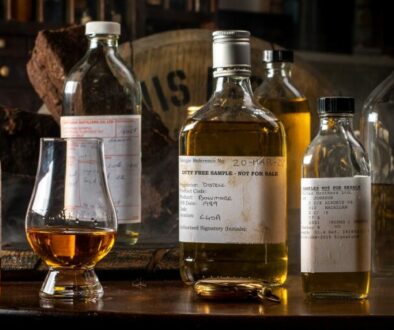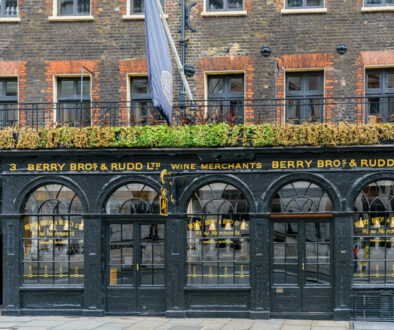The Midleton Very Rare series is one of Ireland’s most famous whiskey exports. Beginning in 1984, the Midleton Very Rare series was created to showcase the whiskies produced at the distillery, which is located in County Cork, Ireland.
As the name suggests, these whiskies are the rarest spirits released from the distillery, with releases often totalling no more than 2,500 cases per year. However, some vintages are much rarer, much more valuable, and much more sought-after than others. That is why we are proud to present the Midleton Very Rare 1988 available to buy now on the Mark Littler Shop.
The Midleton Very Rare Series
The Midleton Very Rare Series began in 1984 and continues to this day. A bottle is released annually, making the Midleton Very Rare series appealing to whisk(e)y collectors (Irish whisky is spelt with an e, unlike scotch). The whiskey is a blend of pot still and grain whiskies distilled at the Midleton distillery, and are usually between 12 and 20 years old, although the bottles themselves carry no age statement. The whiskies are handpicked by Midleton’s Master Distiller, a role which was held for 47 by Barry Crockett until his retirement in 2013. The title then passed to Brian Nation from 2013 to 2020, after which point Kevin O’Gorman took up the mantle. Each of the bottles is then signed by the Master Distiller prior to release.
There have also been limited edition releases of Midleton Very Rare for celebratory occasions such as the Midleton Barry Crockett Legacy and the Midleton Very Rare 30th Anniversary Pearl Edition.
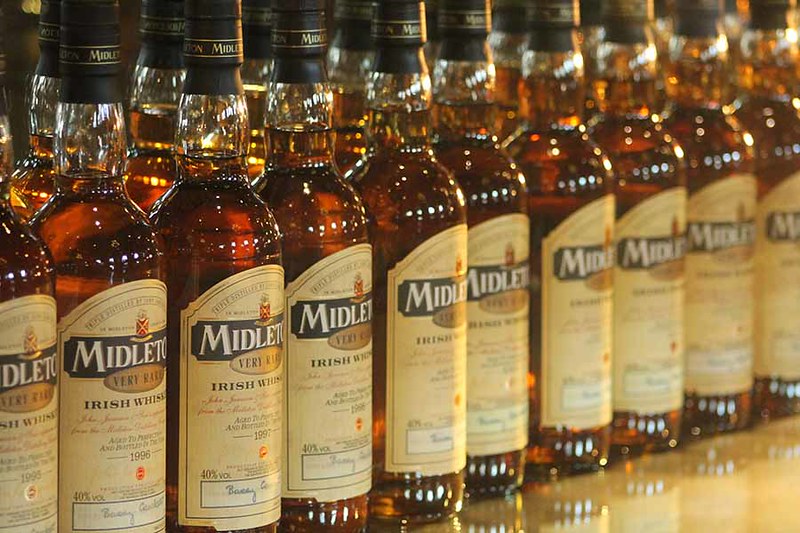
Of course, due to the wide range of vintages in the series, there is also a range of auction results to be expected from each vintage. As an example, a Midleton Very Rare 1984 currently achieves between £1,500-£2,000 at auction. By comparison, the Midleton Very Rare 2022 is currently averaging between £150-£250.
The Midleton Very Rare 1988
The Midleton Very Rare 1988 is a bottle of legend. Having only appeared at auction 16 times since 2009, this particular bottling is incredibly rare and, as a result, vastly more expensive than other bottlings in the series. In fact, when the Midleton Very Rare 1988 does appear at auction, it is most often sold in Ireland, meaning that opportunities to buy this elusive bottle in the UK or elsewhere are extremely scarce.
In addition to the distinct lack of auction results for the Midleton Very Rare 1988, the bottles that have previously appeared at auction have also had extremely low fill levels, some even as much as ⅓ of the way down the bottle. The bottle that we have listed for sale on our shop has a fantastic fill level that has been carefully maintained by the owner for many years.
So, why is it that the Midleton Very Rare 1988 is so scarce. Rumour has it that only one cask was used in the filling of the 1988 release due to a downturn in the whisky market at that time. The certificate inside the bottle box seems to disprove this, stating “[t]his is to certify that I, Barry Crockett, Master Distiller, The Midleton Distillery Company, Midleton, County Cork, Ireland, have witnessed and supervised the distillation and maturation of these, the finest quality distillates from which have been selected the supreme 50 casks to be bottled in 1988 as Midleton Very Rare Whiskey”. When we compare this to a more modern release, let’s say the 2017 edition, the number of casks bottled is not stated. Rather, an unknown number of “supreme casks” were used.
How Many Bottles Of Midleton Very Rare 1988 Are There?
In that case, can we work out approximately how many casks were used from the number of bottles in the 1988 release? Out of the 16 bottles sold at auction (and the bottle on our shop) the highest stated bottle number is 1250. Now, if we assume that the casks that were used were hogsheads, which hold approximately 250 litres of liquid, matured for the maximum speculated maturation time of 20 years at 2% angel’s share per year, then at the end of the maturation period there will be around 166 litres of liquid left in the cask. Using the UK standard 70cl bottles, this means that you could get around 116.2 bottles from the cask. Therefore, it is impossible that one single hogshead was used in the creation of the 1988 vintage. But, what about using a puncheon?
A puncheon is the largest standard cask size used in the industry and holds around 500 litres of liquid. Using the same maths, after 20 years a puncheon will yield around 233.1 70cl bottles of whisky. Still, far too small a number.
If we assume that bottle 1,250 is the last bottle in the run then you would need at least 11 hogsheads or 6 puncheons to fulfil the run. These are far lower numbers than the 50 casks stated on the certificate. In fact, if 50 hogsheads were used then the bottle run would be approximately 5,810, and if puncheons were used then there would be 11,655 bottles yielded.
All this is to say that we don’t truly have an idea how many casks (and therefore how many bottles) of Midleton Very Rare 1988 were used in the creation of this release. Whatever that number may be, it is safe to say that the Midleton Very Rare 1988 has remained extremely scarce, and is the hardest bottle in the series to acquire. To collectors of Midleton Very Rare, this bottle is like gold dust.
About The Bottle
This particular bottle of Midleton Very Rare 1988 was brought to us by a private client to sell on his behalf. He and his wife have lovingly stored the bottle for over 30 years after purchasing the bottle in Dublin in 1991 when the family were holidaying and celebrating a birthday.
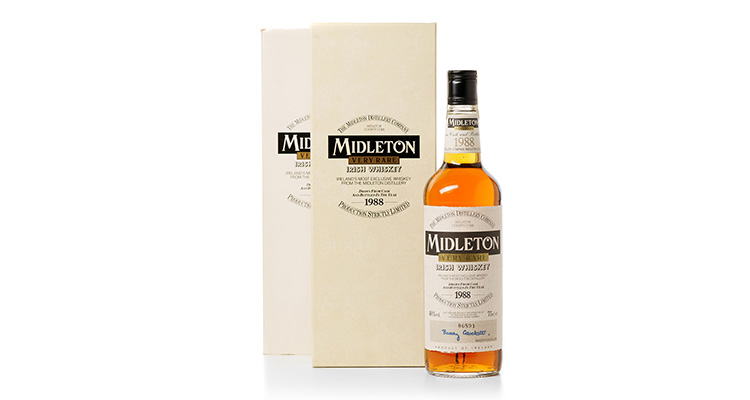
The bottle is in excellent condition with a crisp, clean label, a fill level into the neck, and comes complete with the original box and sleeve as well as the authenticity certificate. This bottle has only ever had one owner, meaning that its provenance can be traced back to the store from which it was purchased and, by extension, back to Midleton Distillery.
The Midleton Very Rare 1988 is available to buy now on the Mark Littler Shop. If you would like to chat with one of the team about this bottle please email us or give us a call and we will be happy to help.
A Brief History of Midleton Distillery
The Old Midleton Distillery started life as a woollen mill in 1796 and was subsequently used as a barracks and stables before being purchased by three brothers, James, Jeremiah, and Daniel Murphy in 1825. Since the Excise Act of 1823 had recently passed, legal distillation was an attractive financial proposition. The resulting distilling operation was called James Murphy and Company.
The brothers spent a large amount of money on the distillery, fitting it with state-of-the-art equipment, including a 31,618-gallon pot still which was, and remains, the largest pot still ever built. Output was rapidly increasing, as was the workforce; in the 1830s the distillery provided jobs to nearly 200 locals.
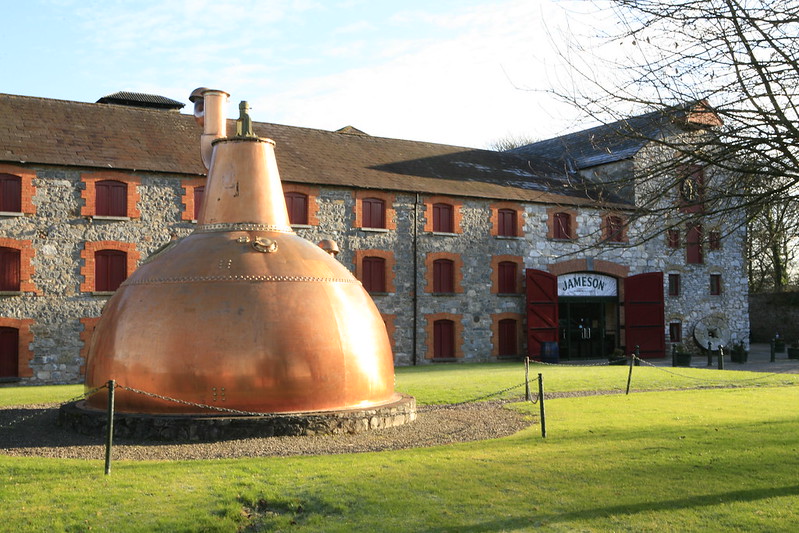
In the 1860s, amidst a downturn in the industry, James Murphy and the heads of several other distilleries in Cork formed the Cork Distilleries Company and compounded the operations of their distilleries in order to ride out the storm. Midleton Distillery joined the company in 1868.
British historian Alfred Barnard was a particular fan of Midleton Distillery upon his visit in 1886, as is chronicled in his book The Whisky Distilleries of the United Kingdom (1887).
After a period of prosperity, the number of whiskey distilleries in Scotland began to decline rapidly, and by the mid-20th century, there was only a handful left. In 1966, John Jameson & Son, John Powers & Son, and Cork Distilleries Company combined forces under the name Irish Distillers. They closed their distilleries with the aim of creating new operations next to the Old Midleton Distillery. As such, in 1975, distillation at the Old Midleton Distillery ceased and work started at the New Midleton Distillery.
Today, Midleton is home to many famous Irish whiskey brands such as Jamesons, Redbreast, Powers, and Paddy. Good news for the old distillery, also. In 1992 it was reopened as the Jameson Experience, a vast visitors’ centre which attracts over 350,000 visitors every year.
The Goliath pot-still, while no longer in use, can be seen on the lawn outside the Jameson Experience, as a reminder of the distillery’s rich history and technological innovation.

